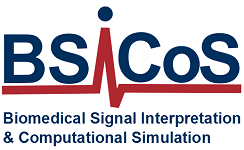-
Proyectos
Multiscale computational tools to improve diagnosis, risk assessment and treatment in prevalent heart diseases (MULTITOOLS2HEART)
Fecha de inicio
2016
Fecha de finalización
2017
Coordinador
Juan Pablo Martínez
Funding agency
CIBER – ISCIII
In this project we aim to investigate and validate novel approaches to extract, model and interpret clinically relevant information derived from cellular models, cardiovascular signals -invasive and non-invasive- and images in the context in three relevant diseased conditions, which are highly prevalent and are known to predispose to arrhythmic complications.
- Atrial Fibrillation (AF) is the most prevalent arrhythmia, characterized by ineffective atrial contraction and irregular ventricular rhythm, which can lead to serious complications, such as stroke. Analysis of Invasive electrograms (EGM), coupled with information from image modalities are commonly used to decide to guide the treatment. In this project, improved computational tools based on more realistic multiscale atrial models will be developed and validated, and will be used to study atrial propagation an the patterns observed in different multielectrode catheter configurations. MRI image analysis will be used to extract and characterize fibrotic tissue in hearts with AF, which will be used to develop and validate electrophysiological models. To improve the characterization of atrial propagation during interventions, spatio-temporal EGM processing approaches will be developed, as well as new methods based on causality analysis.
- Ischemic heart disease (IHD) or coronary artery disease is the one of the first causes of death in the developed countries. Most of these deaths are caused by ventricular arrhythmias, which are the main complication of IHD. In this project, we will work in the non-invasive characterization of acute myocardial ischemia, based on spatiotemporal analysis of depolarization in the ECG, in order to offer additional information to the well-known ST and repolarization analysis. The problem of automatic detection of candidate ventricular ablation sites to terminate arrhythmias in post myocardial infarction patients will also be addressed. New computational tools and models, using data extracted from MRI imaging, will be used to better understand the mechanisms of arrhythmia in these settings.
- Chronic Heart Failure (CHF) occurs when the heart is unable to pump efficiently enough to meet the needs of the body. It is the leading cause of hospitalization in older people and presents and increasing prevalence. Stratifying this population according to the risk of arrhythmic or pump-failure-related death would improve the clinical management of these patients. In this project, we will address the development and validation of indices quantifying the dispersion of repolarization, the adaptation of the repolarization to the heart rhythm, and the dynamic interactions between respiration and heart rate, using multiscale computational models to validate hypotheses and provide a physiological interpretation. We will also address specifically the development of repolarization indices for risk stratification in patients with CHF and AF, where other techniques cannot be used.
